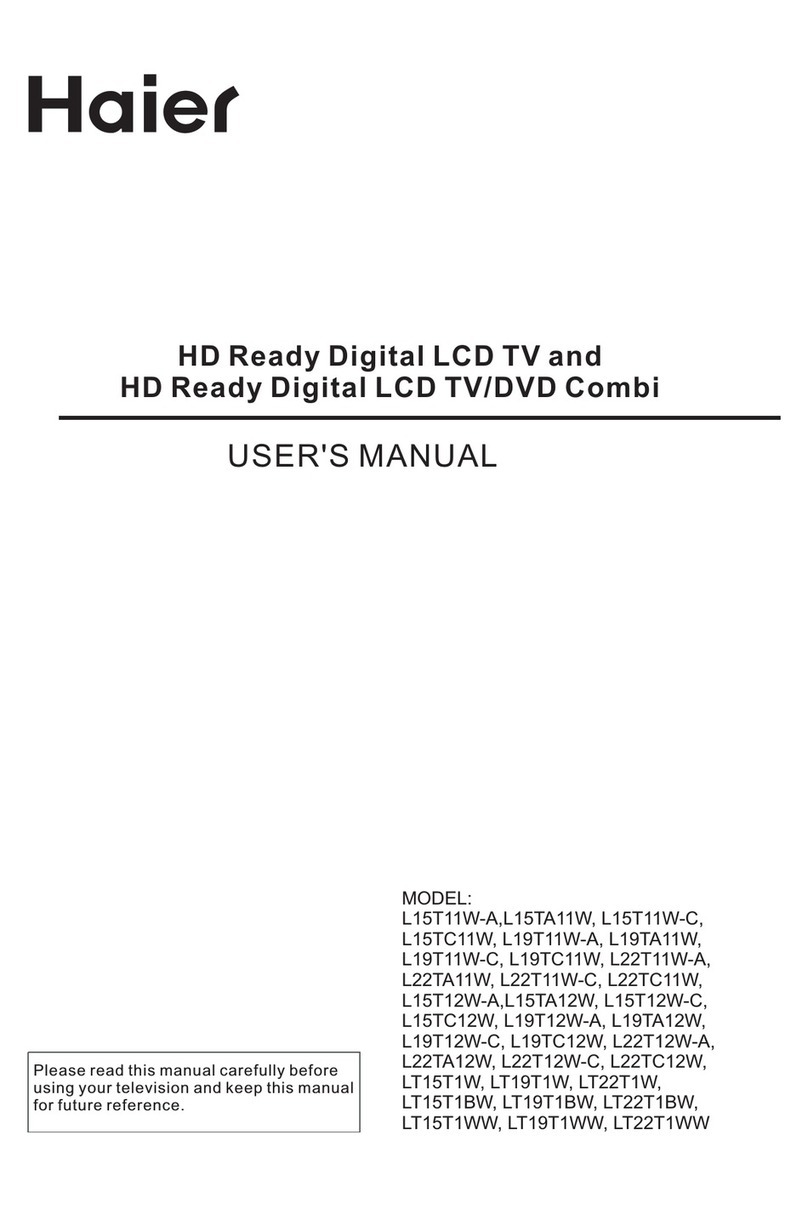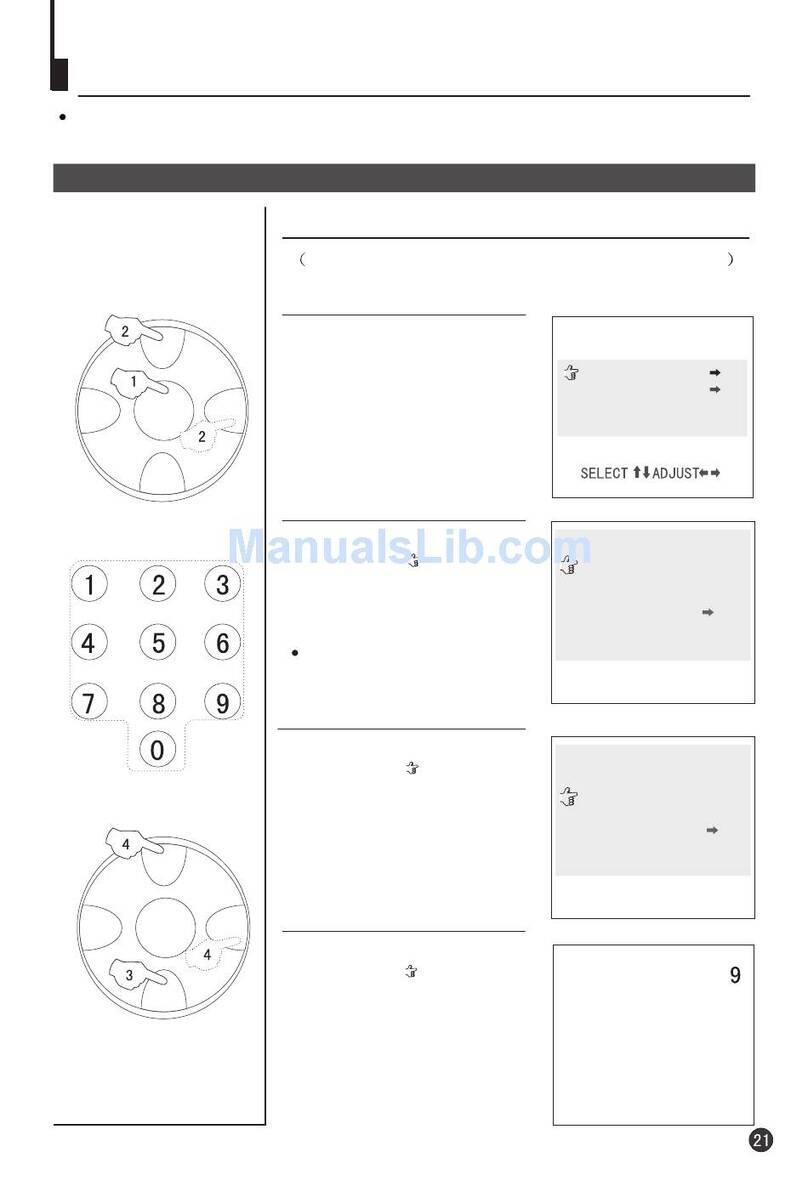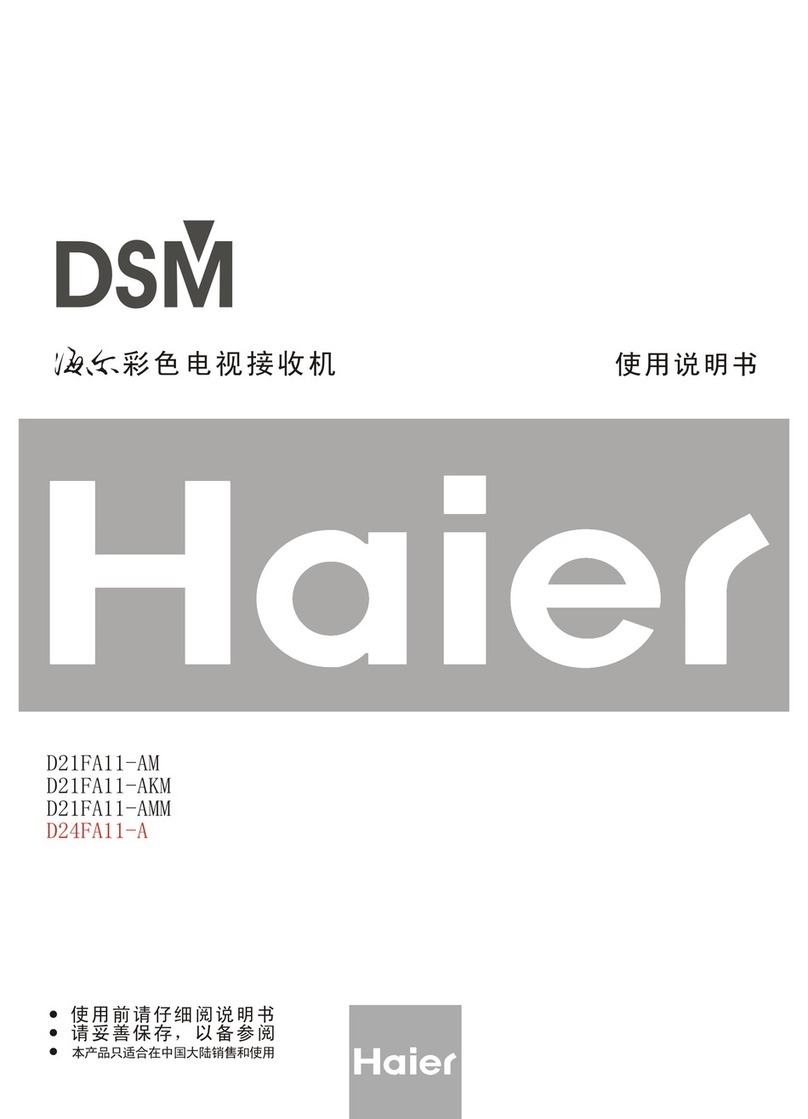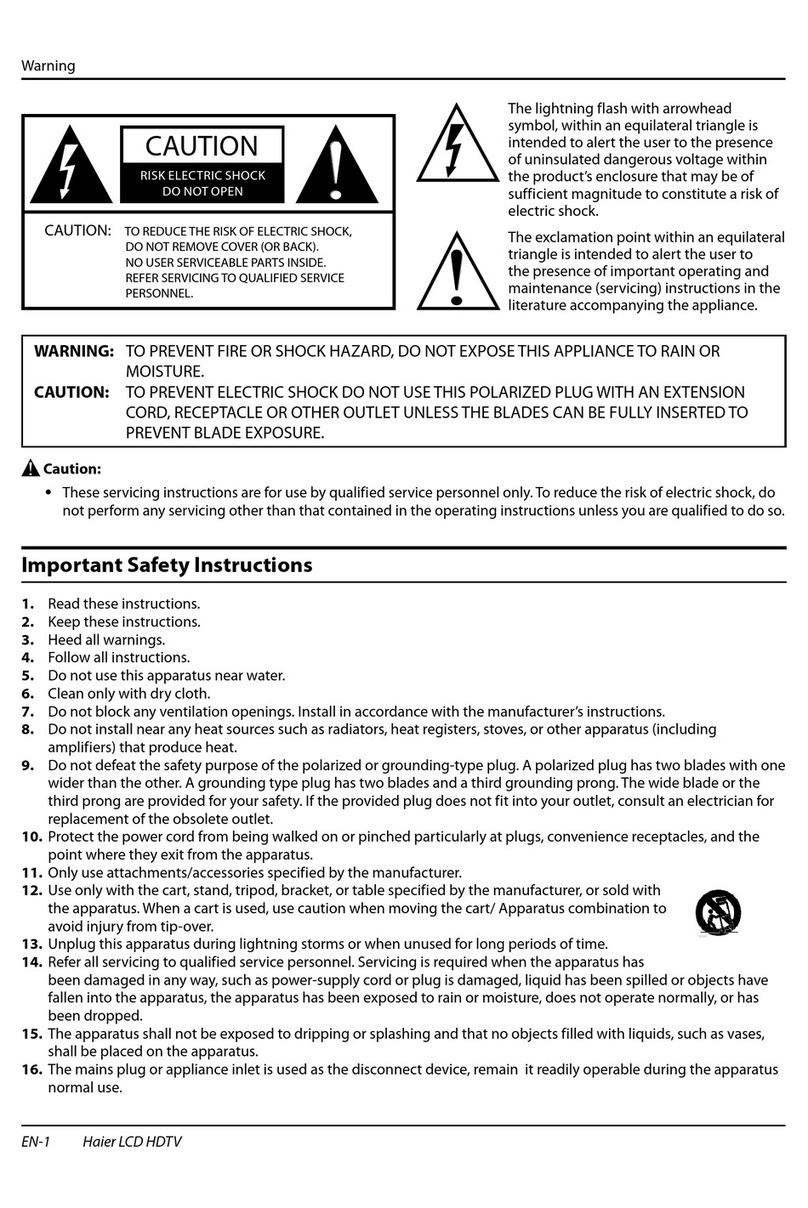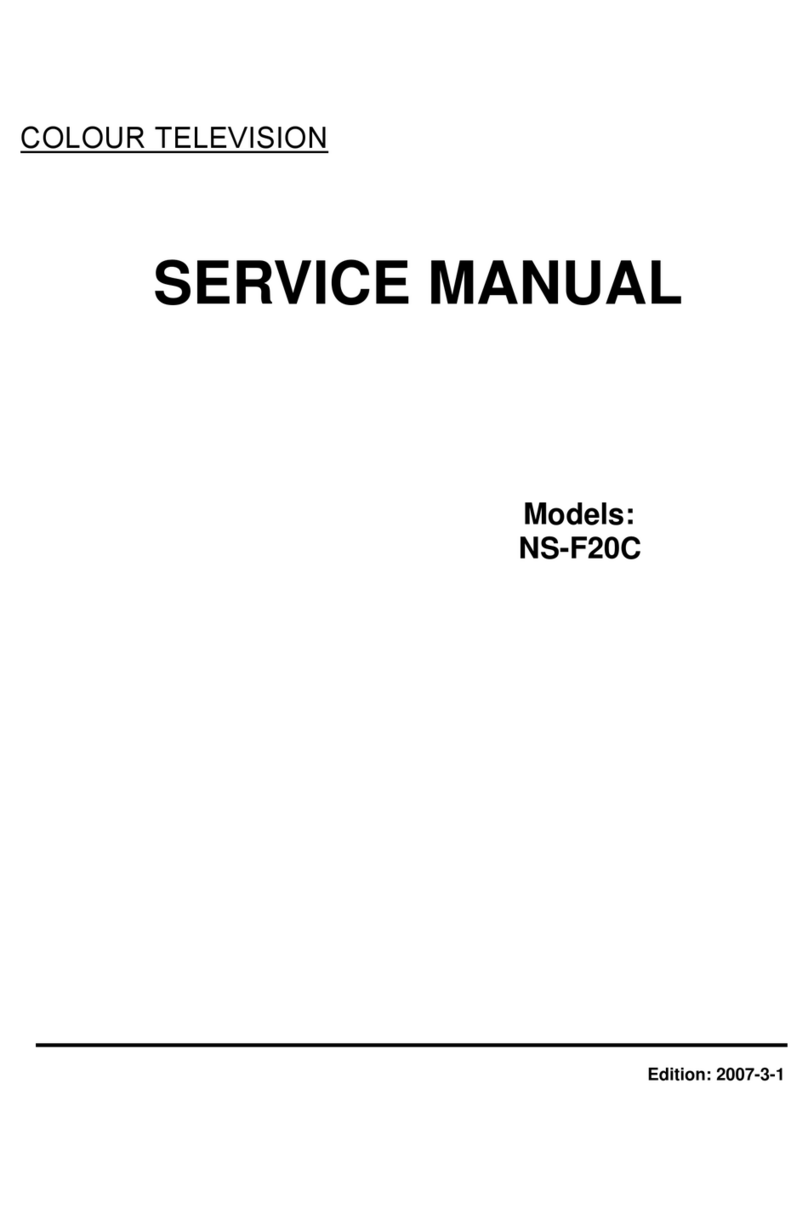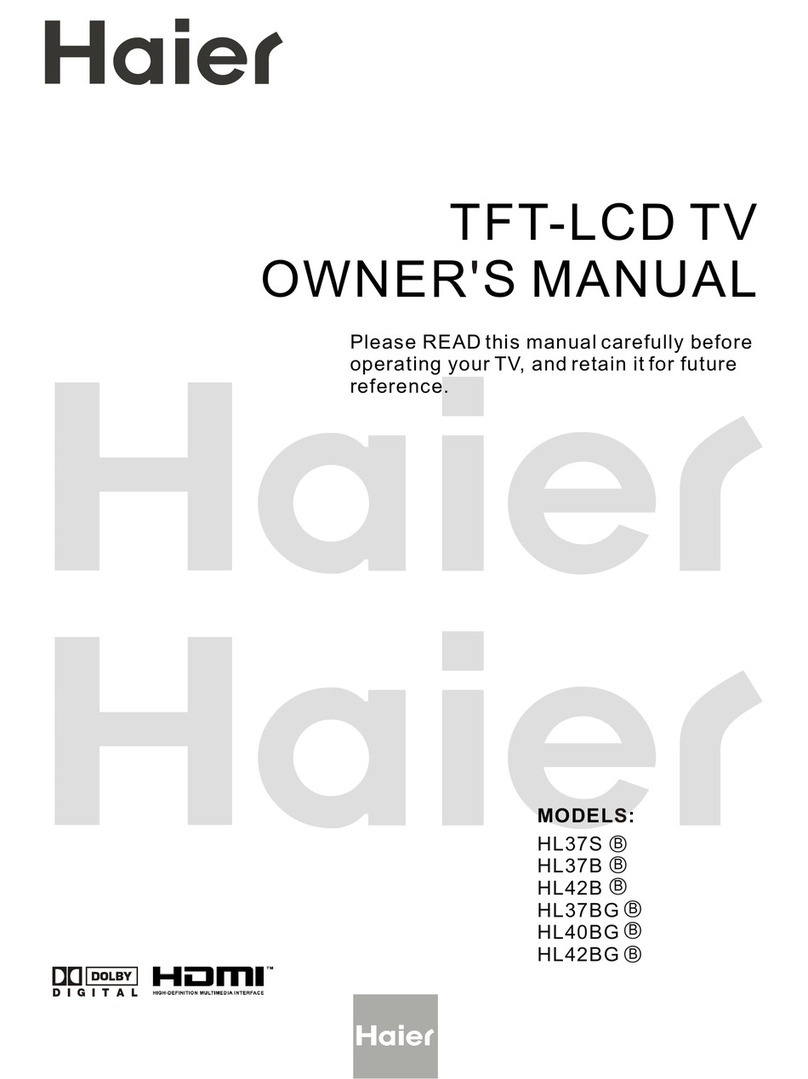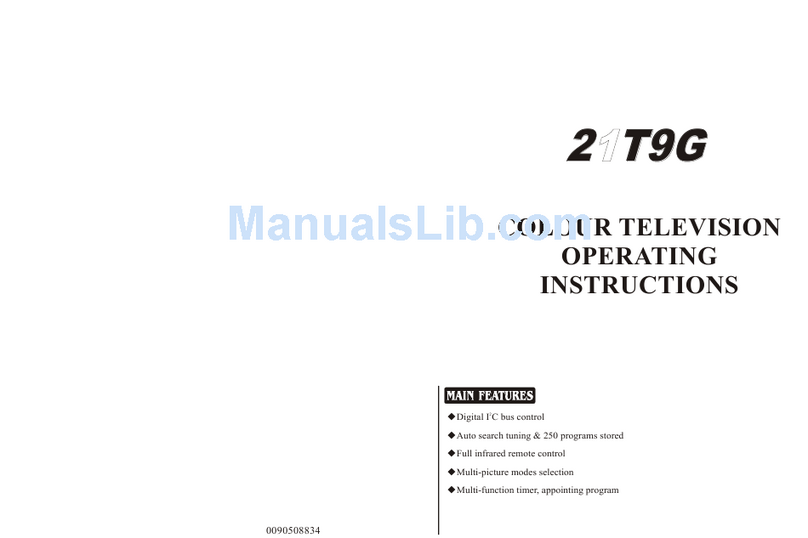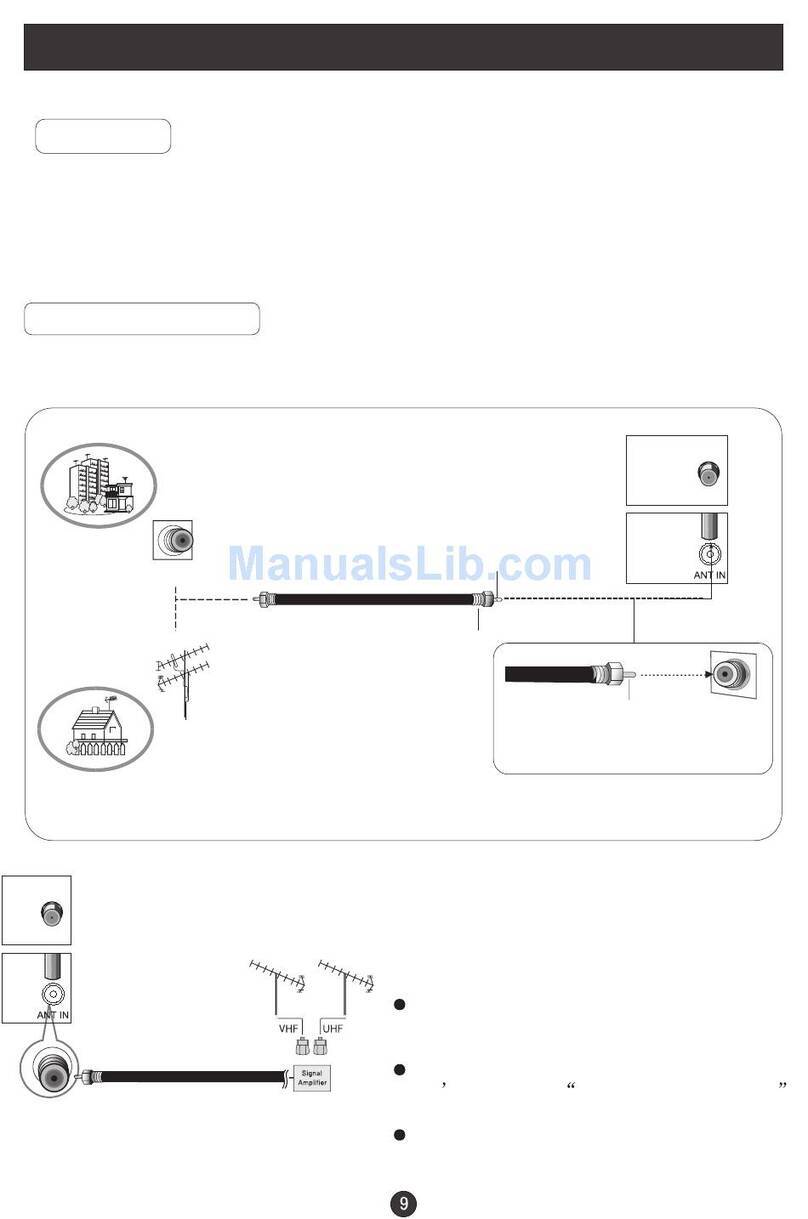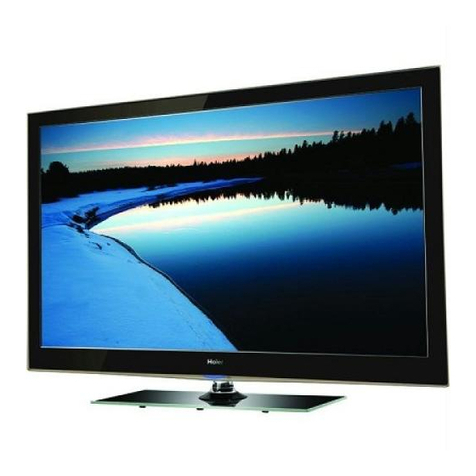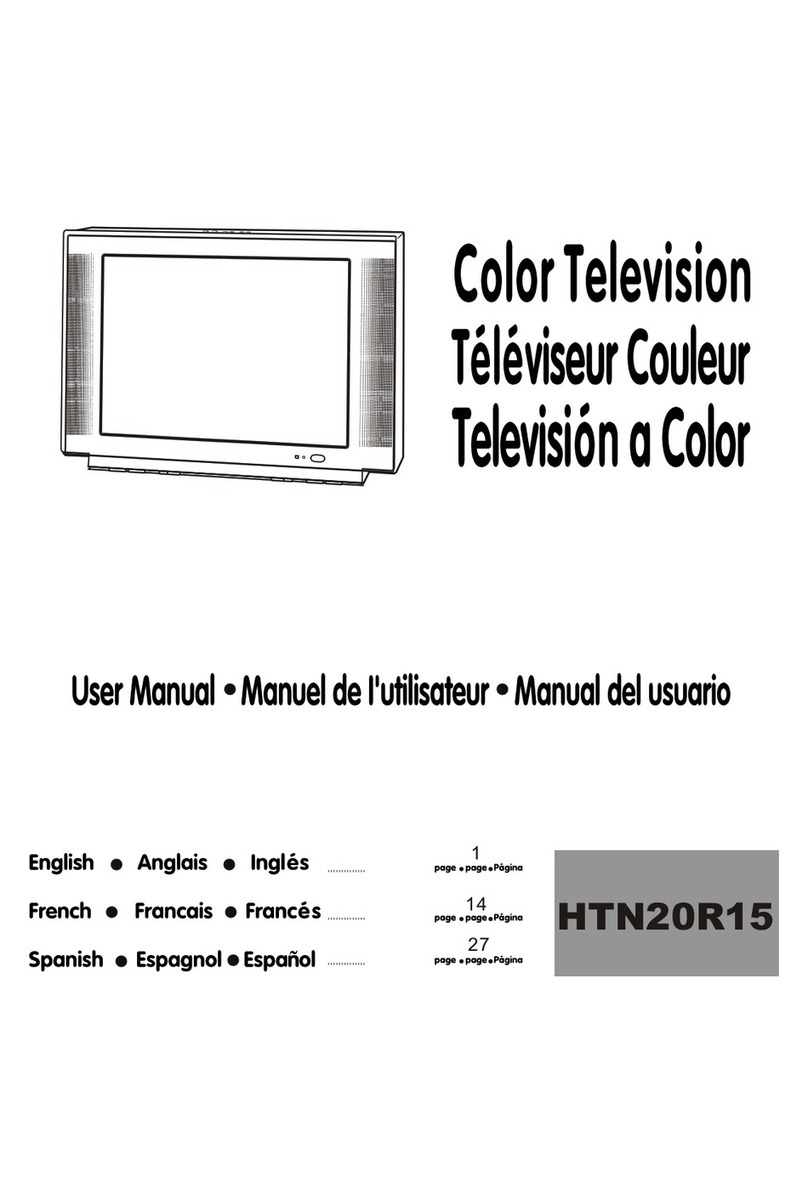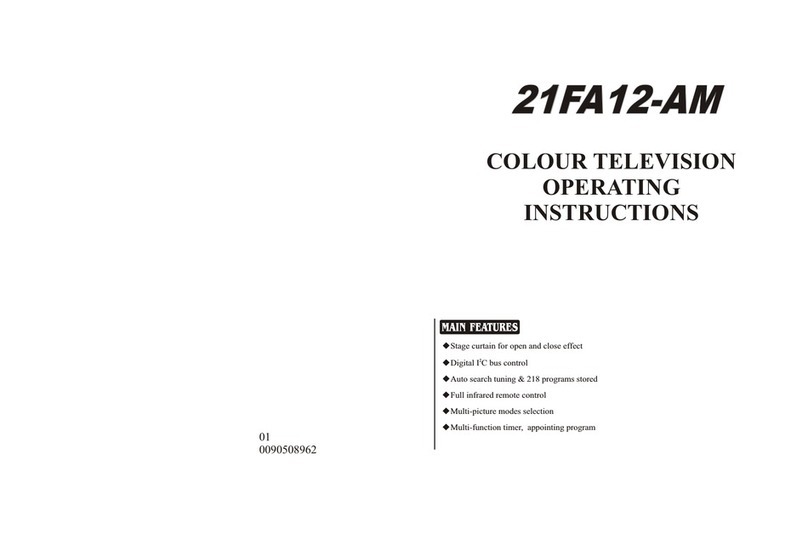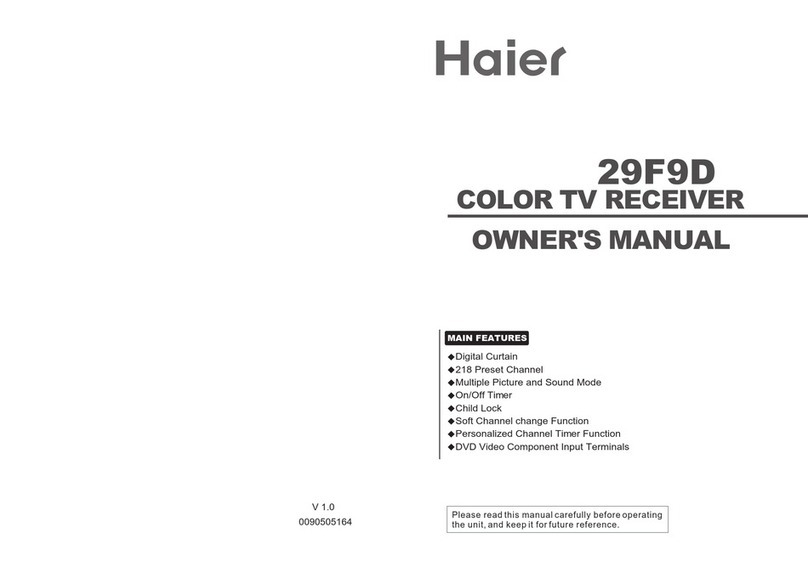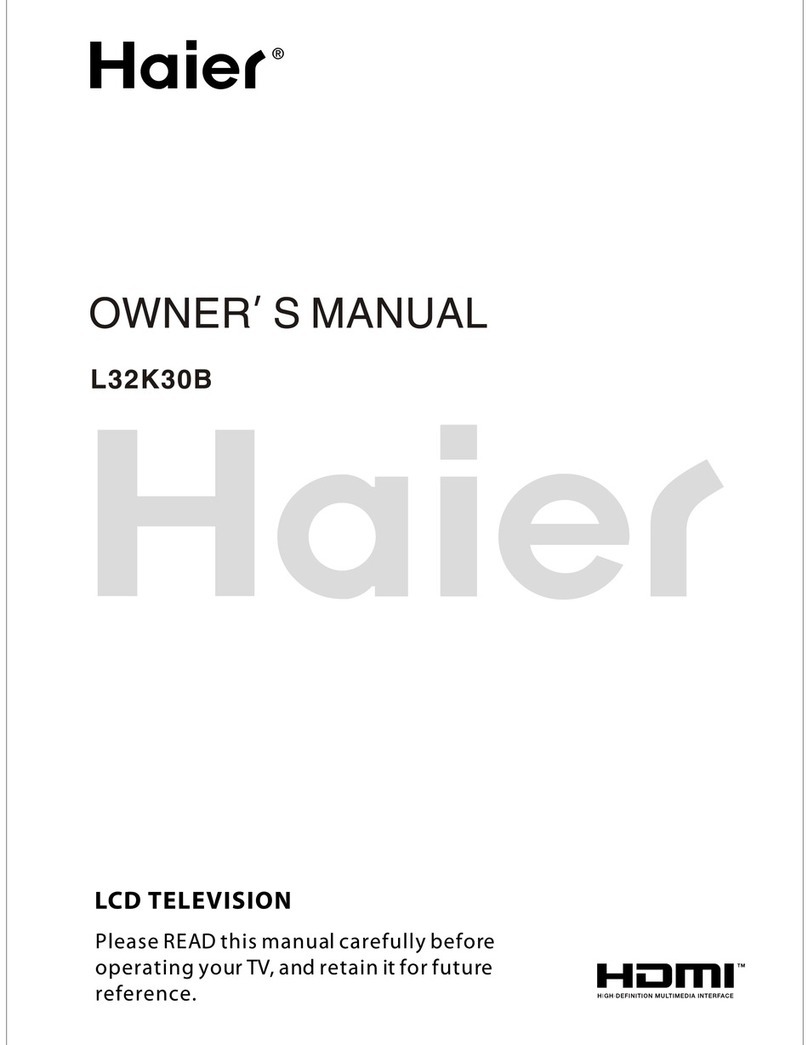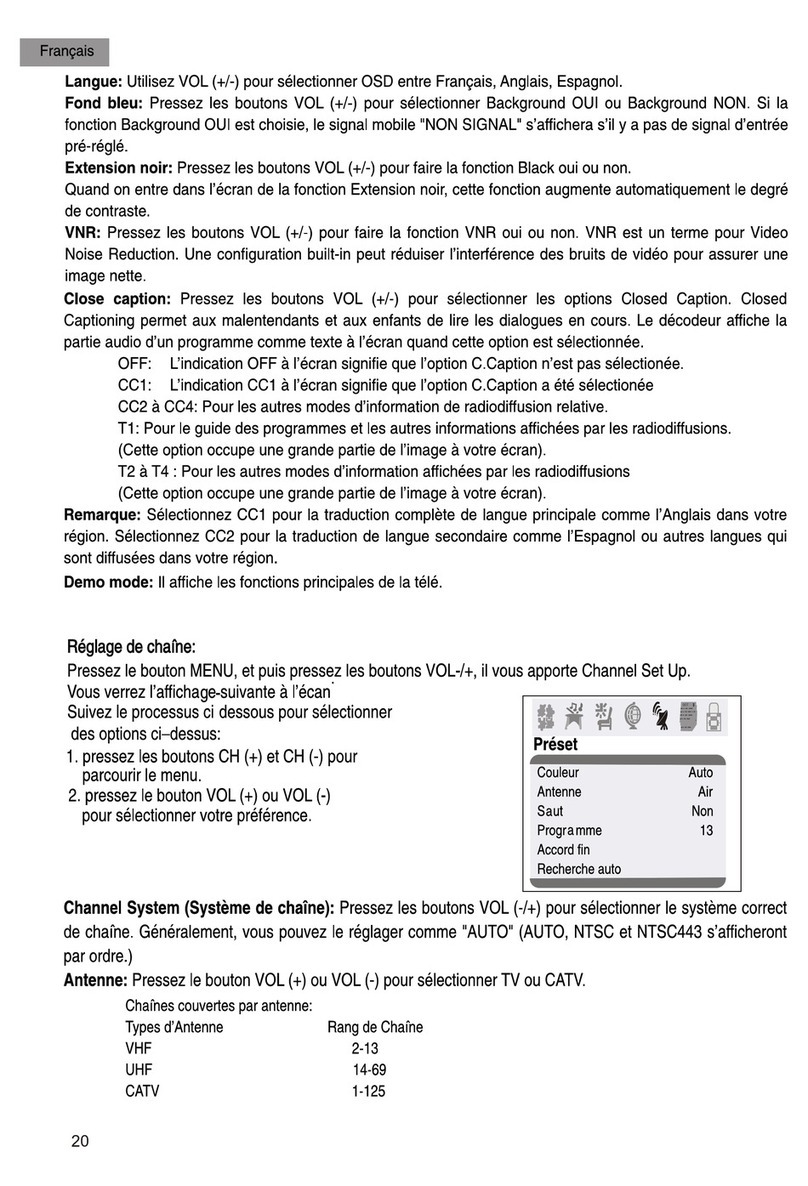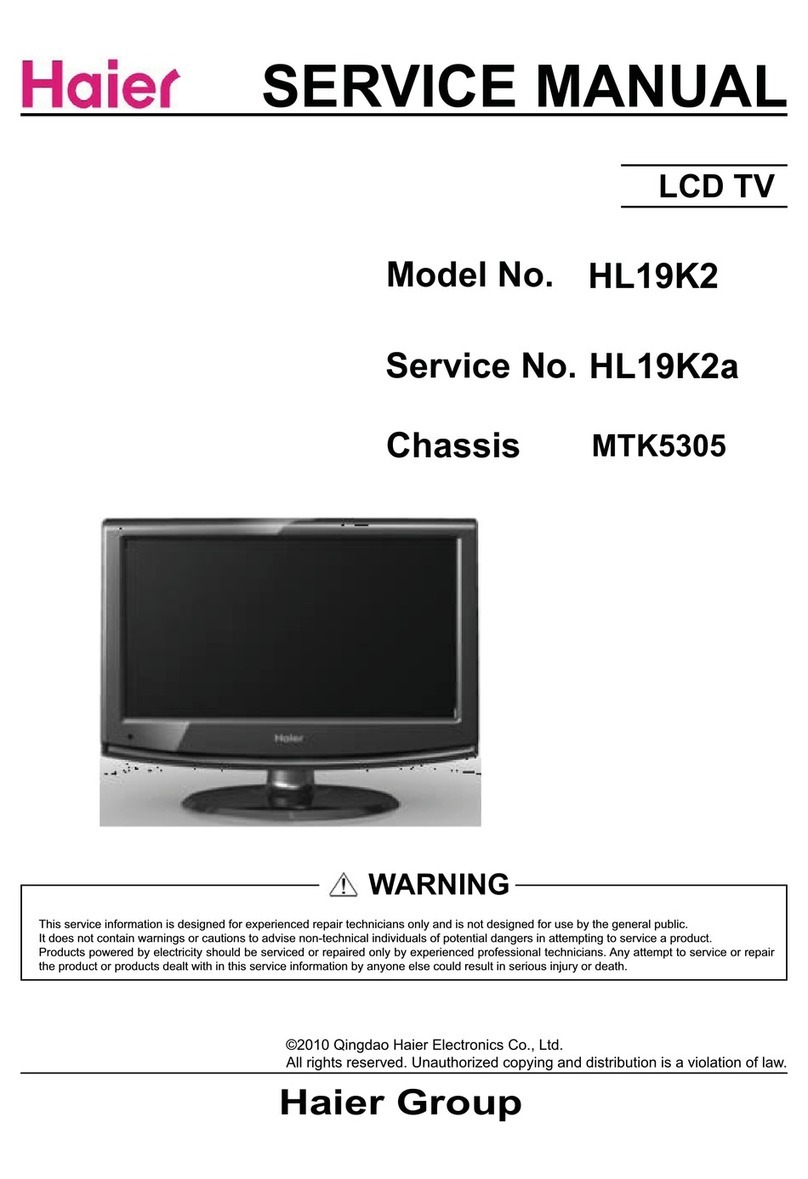6
and any of the safety precautions, always follow the safety precautions. Remember: Safety First.
General Servicing Precautions
5.1 Always unplug the receiver AC power cord from the AC power source before:
a. Removing or reinstalling any component, circuit board module or any other assembly of
the receiver.
b. Disconnecting or reconnecting any receiver electrical plug or other electrical connection.
c. Connecting a test substitute in parallel with an electrolytic capacitor in the receiver.
CAUTION: A wrong substitution part or incorrect installation polarity of electrolytic
capacitors may result in an explosion hazard.
d. Discharging the picture tube anode.
5.2Test high voltage only by measuring it with an appropriate high voltage meter or other
voltage-measuring device (DVM, FETVOM, etc.) equipped with a suitable high voltage probe.
Do not test high voltage by “drawing an arc”.
5.3 Discharge the picture tube anode only by (a) first connecting one end of an insulated clip lead
to the degaussing or kine aquadag grounding system shield at the point where the picture tube
socket ground lead is connected, and then (b) touch the other end of the insulated clip lead to
the picture tube anode button, using an insulating handle to avoid personal contact with high
voltage.
5.4 Do not spray chemicals on or near this receiver or any of its assemblies.
5.5 Unless specified otherwise in this service manual, clean electrical contacts only by applying
the following mixture to the contacts with a pipe cleaner, cotton-tipped stick or comparable
nonabrasive applicator; 10% (by volume) Acetone and 90% (by volume) isopropyl alcohol
(90%-99% strength)
CAUTION: This is a flammable mixture.
Unless specified otherwise in this service manual, lubrication of contacts is not required.
5.6 Do not defeat any plug / socket B+ voltage interlocks with which receivers covered by this
service manual might be equipped.
5.7 Do not apply AC power to this instrument and/or any of its electrical assemblies unless all
solid-state device heat sinks are correctly installed.
5.8 Always connect the test receiver ground lead to the receiver chassis ground before
connecting the test receiver positive lead.
Always remove the test receiver ground lead last.
5.9 Use with this receiver only the test fixtures specified in this service manual.
CAUTION: Do not connect the test fixture ground strap to any heat sink in this receiver.
Electrostatic ally Sensitive (ES) Devices
Some semiconductor (solid state) devices can be damaged easily by static electricity. Such
components are usually called Electrostatic ally Sensitive (ES) Devices. Examples of typical ES
Warning and Cautions
Warning and Cautions
